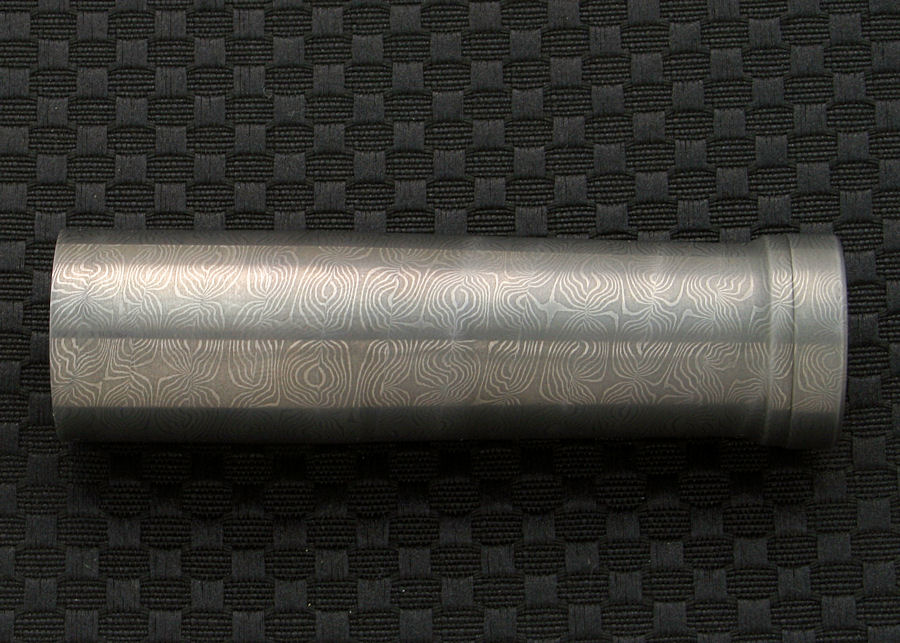Steve Culver
Well-Known Member
I thought that I would post up the results of a damascus project that I have been working on. I have successfully made and test fired a twist damascus gun barrel.
Accomplishing the making of this barrel has been a major challenge. I have spent two years of research and literally months of shop time on it. I have finally managed to make a damascus barrel and I conducted proof firing tests on it September 26, 2012.
This barrel is made by the traditional method used for twist damascus barrels. It started as two billets of 26 layer damascus. The billets were drawn out into 1/2" square rods. The rods were twisted, one to the right, one to the left. The twisted rods were forged welded together into a single rod; or riband, in damascus barrel terminology. The riband is wound around a mandrel to form a coil. The coil is forge welded to make a solid barrel tube. The tube is then drilled and reamed to the final bore dimensions and the outside of the tube is turned to final dimension.
The barrel was proof fired with a patched .490" round ball. The powder charges were FFF black powder. First load, 30 grains of powder. Second load, 35 grains. Third load, 40 grains.
Below is a photo of the barrel. It only has a light etch on it at this time.

I videoed the entire proof firing sequence. There is a 21 minute video of the entire process, including loading, firing and inspection of the barrel after firing. There is also a short video of just the barrel being fired. Below is a link to my Youtube channel, were the videos can be viewed.
http://www.youtube.com/user/SteveCulverMS1?feature=watch
Accomplishing the making of this barrel has been a major challenge. I have spent two years of research and literally months of shop time on it. I have finally managed to make a damascus barrel and I conducted proof firing tests on it September 26, 2012.
This barrel is made by the traditional method used for twist damascus barrels. It started as two billets of 26 layer damascus. The billets were drawn out into 1/2" square rods. The rods were twisted, one to the right, one to the left. The twisted rods were forged welded together into a single rod; or riband, in damascus barrel terminology. The riband is wound around a mandrel to form a coil. The coil is forge welded to make a solid barrel tube. The tube is then drilled and reamed to the final bore dimensions and the outside of the tube is turned to final dimension.
The barrel was proof fired with a patched .490" round ball. The powder charges were FFF black powder. First load, 30 grains of powder. Second load, 35 grains. Third load, 40 grains.
Below is a photo of the barrel. It only has a light etch on it at this time.

I videoed the entire proof firing sequence. There is a 21 minute video of the entire process, including loading, firing and inspection of the barrel after firing. There is also a short video of just the barrel being fired. Below is a link to my Youtube channel, were the videos can be viewed.
http://www.youtube.com/user/SteveCulverMS1?feature=watch

